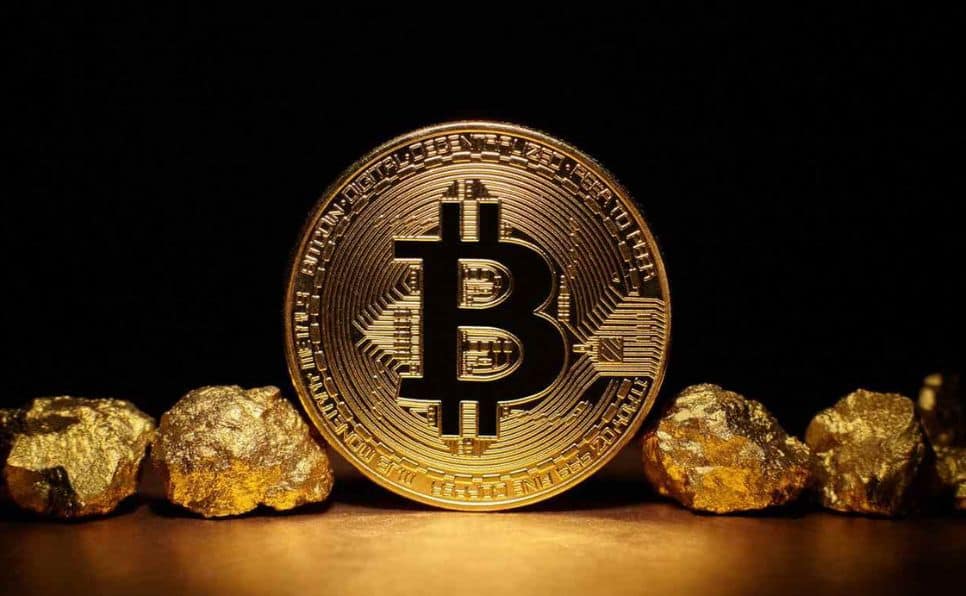Energy consumption is a critical topic of discussion in today’s world due to its profound impact on different aspects of human life and the environment. As the global population continues to grow, economies expand, and technological advancements accelerate, the demand for energy escalates. It is important to explore the major reasons why energy consumption is crucial to confront in our current times.
Energy consumption is closely linked to economic growth and development. Energy plays a pivotal role in powering industries, manufacturing processes, transportation systems, and infrastructure development. Adequate and affordable energy sources are essential for fostering economic productivity, job creation, and improving living standards. Discussions surrounding energy consumption are vital to ensuring sustainable and inclusive economic growth.
Cryptocurrencies in general, and Bitcoin specifically, come under constant fire for the energy they use and their environmental impact. And while, yes, Bitcoin mining does require a large amount of energy, is it really worse for the environment than mining for precious metals or powering both retail and commercial banking locations around the world?
Hass McCook of Bitcoin Magazine thinks not. In 2021, McCook returned to calculations he made in 2014 (and revised in 2018), which suggest that Bitcoin is “greener” than gold or traditional banking. However, he also makes it clear that he thinks “such comparisons are disingenuous,” because they compare two unlike things–apples-to-oranges.
McCook also posits that Bitcoin’s energy usage is easy enough to calculate, but that it’s next to impossible to do the same for gold mining or banking. Thus, any comparison between these three will be tenuous at best. Still, let’s take a look at the numbers and the story they tell.
Bitcoin Energy Consumption
First and foremost, how does Bitcoin use energy? Every Bitcoin transaction must be “confirmed” by the Bitcoin network to ensure its validity. This process is completed by Bitcoin miners, who use powerful computers to solve complicated cryptography problems. Thus, Bitcoin uses energy in the form of electricity that powers computer hardware that confirms transactions.
McCook uses the Cambridge Bitcoin Electricity Consumption Index (CBECI) to quantify the total amount of electricity used by the Bitcoin network annually. When he wrote the above-linked article last year, the CBECI clocked Bitcoin’s energy consumption at 113 terawatt-hours (TWh) annually. Today, the CBECI shows annual consumption at 121.44 TWh.
But while McCook expressed confidence that Bitcoin’s energy usage could be easily calculated, that doesn’t seem to be the case. Other sources provide different estimates. In September 2021, the New York Times pegged Bitcoin consumption at 91 TWh per year. And today, Digiconomist puts the figure at 204.5 TWh.
The global average CO2 emission per kWh of on-grid power equals 0.6 tons. Thus, Bitcoin is responsible for somewhere between 54.6 and 122.7 tons of CO2 annually.
These differences in energy estimates stem from the method used to calculate energy usage. You see, the computing power (hash rate) used to mine Bitcoin can be looked up at any time. But there’s no way to confirm exactly how much energy the miners use to generate that computing power.
Consequently, we can make educated guesses about the total energy consumption of the Bitcoin network based on the efficiency of popular mining hardware. Or, as Digiconomist does, we could estimate energy consumption as it relates to miner income.
But at the end of the day, these are still just estimates, despite McCook’s claim that calculating Bitcoin’s energy consumption was a trivial matter. Nevertheless, these estimates are the best data we have. So we’ll use the above figures to see how they compare to the energy consumption of the banking industry and gold mining.
Gold Mining Energy Consumption
Mining gold requires massive, fossil-fuel-powered construction equipment, explosives, and power-hungry refineries. The noise alone can be deafening, not to mention the disruption of surface or groundwater sources and the mountains of waste rock the process creates. But let’s focus on the energy the process consumes and the CO2 it emits.
The computer company Dell extracts gold from recycled electronics in an effort to reduce its environmental impact. The company notes that a single kilogram of mined gold emits 20 tons of CO2. The process also consumes 48.6 megawatt-hours (MWh) of energy.
And, according to a recent study from DePaul University, gold extracted for jewelry, which is about half of all mined gold, has an even greater environmental impact. The study shows that the process emits roughly 35 tons of CO2 per kg of gold.
Unfortunately, DePaul’s study fails to mention the energy consumed to refine the gold. Thus, McCook makes a reasonable assumption that the energy required to mine and refine gold for jewelry is similar to that required in the recycling process.
Recycling gold requires 37 tons of CO2 and 31.3 MWh of energy. Thus, mining and refining gold for jewelry would require 79.9 MWh of energy per kilogram of gold (48.6 MWh to mine, 31.3 MWh to refine).
In 2020, the world mined 3,500 tons of gold and recycled 1,300 tons. With these figures in mind McCook totals the energy consumption of the gold mining industry at 265 TWh. Additionally, the process emits roughly 145 megatons (Mt) of CO2.
Traditional Bank Energy Consumption
Calculating the energy consumption of traditional banking is far more challenging than doing so for Bitcoin or Gold mining because of the massive reach of the industry. Doing so would need to account for the electricity used to power every local bank branch and ATM, as well as corporate offices. It would also need to account for energy used to create physical currency.
McCook considered all of these variables in his original analysis in 2014. Assuming the banking industry increased its energy consumption by 1-2% annually since then, its current energy consumption should be somewhere in the neighborhood of 700 TWh. And that energy use would produce roughly 400 Mt of CO2.
Comparing Bitcoin, Banking, & Gold
As you can see from the graphic above, even the highest estimates of Bitcoin’s energy usage paint the cryptocurrency as greener than both gold mining and traditional banking.
As time goes on, the difficulty of the cryptography problems Bitcoin must miners solve increases. Therefore, it’s safe to assume that Bitcoin’s energy usage will increase over time. However, miners are ahead of the curve in finding the least expensive energy, which increasingly comes in the form of renewables.
So even as its energy needs climb, Bitcoin’s environmental impact may fall. It’s very unlikely that gold mining will undergo similar environmentally-friendly changes given the industry’s need for explosives among other things. And while bankers are always looking for ways to save money, the size of banking institutions and the bottlenecks of the corporate world make it difficult for them to adapt to quickly changing technology.
That said, there are far more traditional banking transactions than there are Bitcoin transactions every day. Plus, gold mining produces jewelry more often than gold bars. Thus, comparing the energy usage of unlike industries (or Bitcoin’s use to that of a whole country, as many articles are apt to do), isn’t all that useful, a point McCook emphasizes.
At the end of the day, yes, the Bitcoin network does use a massive amount of energy. But demonizing Bitcoin for its energy usage without even looking at the energy used by similar industries seems to be at best a lazy comparison and at worse a comparison made in bad faith.
It feels awfully similar to campaigns encouraging individuals to lower the temperature on the thermostats in their homes to combat climate change that ignore the fact that since 1988, 100 companies have been responsible for 71% of global emissions. Yes, we all need to do our part for global warming. But let’s focus on efforts that will actually make a difference.
From where we stand, the good that Bitcoin does for the world greatly outweighs its energy usage. In fact, its energy usage might even be a good thing.
These conversations about energy consumption are important for a variety of reasons, but a large one is an opportunity to highlight the importance of diversifying energy sources and promoting domestic energy production. Embracing renewable energy technologies, improving energy efficiency, and fostering energy independence through innovation and policy frameworks become critical to ensure a stable and secure energy supply.
Addressing energy consumption encourages technological advancements and innovation as well. The pursuit of more efficient energy systems, alternative energy sources, and energy-saving technologies drives progress and economic competitiveness. Discussions surrounding energy consumption provide a platform for collaboration, research, and development, enabling breakthroughs in clean energy technologies, storage solutions, and smart systems.
Ultimately, energy consumption is a paramount topic of discussion in today’s world due to its far-reaching implications. It influences economic growth, environmental sustainability, energy security, technological advancements, and social equity. By addressing energy consumption, we can strive to create a future powered by clean and sustainable energy sources, mitigating climate change, fostering economic prosperity, and ensuring access to energy for all. Governments, businesses, and individuals must engage in meaningful conversations and take collective actions to shape a more sustainable and resilient future.
Still Interested in Bitcoin?
If you aren’t deterred by Bitcoin’s energy use and still want to invest, you can always fill your digital wallets from right here on our site. Or, of course, you can also visit one of our more than 1,500 Bitcoin ATM locations around the country to buy your coins with cash.





